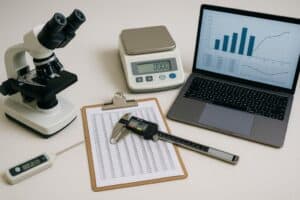Tech News
Boosting Research Accuracy with the Right Collection and Analysis Gear
Research accuracy determines whether results are trusted, replicated, or completely dismissed. Getting it wrong costs time and credibility. When research accuracy matters, the gear you use is everything. Poor tools give poor data, and inadequate data wrecks findings. Before you design your study, assess what equipment supports the type and scale of your research. Your outcomes depend on it.
Start with Precision Instruments
Using imprecise instruments introduces errors that multiply across your data. Precision tools minimize that risk at the source. Calibrated devices like lab thermometers, high-resolution microscopes, or digital scales give exact, repeatable readings. That reduces false positives and statistical noise. Without reliable research collection and analysis tools, your data set may look full but mean nothing. Accuracy begins with what you measure and how tightly it’s measured.
Sensors Beat Estimations Every Time
Sensors remove human error from the data collection process. Timed reactions, environmental changes, or small-scale shifts are hard to catch manually. Sensors log events in real time with consistent sensitivity, providing cleaner input for analysis. When accuracy depends on timing or subtle variations, relying on the naked eye introduces subjectivity. Use sensors to ensure your observations are measured, not guessed.
Capture Data Digitally and Immediately
Every manual transfer is a chance to introduce an error. Writing down numbers or importing from outdated devices delays analysis and introduces mistakes. Digital capture systems feed raw data directly into storage and analysis platforms. That maintains fidelity and ensures nothing is lost in translation. For research relying on timestamps or frequency patterns, digital-first capture is essential. You don’t just save time—you preserve truth.
Match Analysis Tools to Your Data Type
The wrong analysis tool warps your findings. Some software can’t handle the volume or structure of specific data sets. Using underpowered or misaligned tools leads to incorrect models and misleading results. Matching tools to data type ensures the output reflects patterns, not software limitations. Reliable insights come from tools built for the data they process, not forced through generic spreadsheets.
Avoid Compatibility Gaps
Disconnected tools slow research and damage data integrity. If your collection gear doesn’t work with your analysis software, you’re constantly converting files, which introduces formatting errors. Compatibility reduces technical friction and helps you focus on insight, not file troubleshooting. Standardized formats and integrated systems streamline workflows and reduce the risk of corruption. Your entire pipeline must run without tech breakdowns.
Account for Field vs Lab Conditions
Using the wrong gear in the incorrect environment ruins data quality. Lab tools fail under heat, dust, or field vibration. You need weatherproof, portable equipment if your study site involves rugged terrain, temperature swings, or moisture. Protecting your tools is protecting your data. Field-appropriate gear ensures the research environment doesn’t distort results or knock your equipment offline mid-study.
Calibrate and Recalibrate Often
Even high-end gear drifts from accuracy over time. Without regular calibration, your numbers become meaningless. Consistent recalibration ensures that tools keep measuring exactly what you think they are. That maintains research integrity and allows others to replicate your results. Skipping recalibration turns precision tools into guesswork devices. Build calibration into your process, not just your checklist.
Precision gear, digital capture, and proper analysis tools improve research accuracy and reliability. Compatibility and calibration keep your workflow efficient and your data valid. One final point: test your full setup before launch. A dry run exposes failures before they damage your actual data. Research is judged by its numbers—make sure yours are worth trusting.






